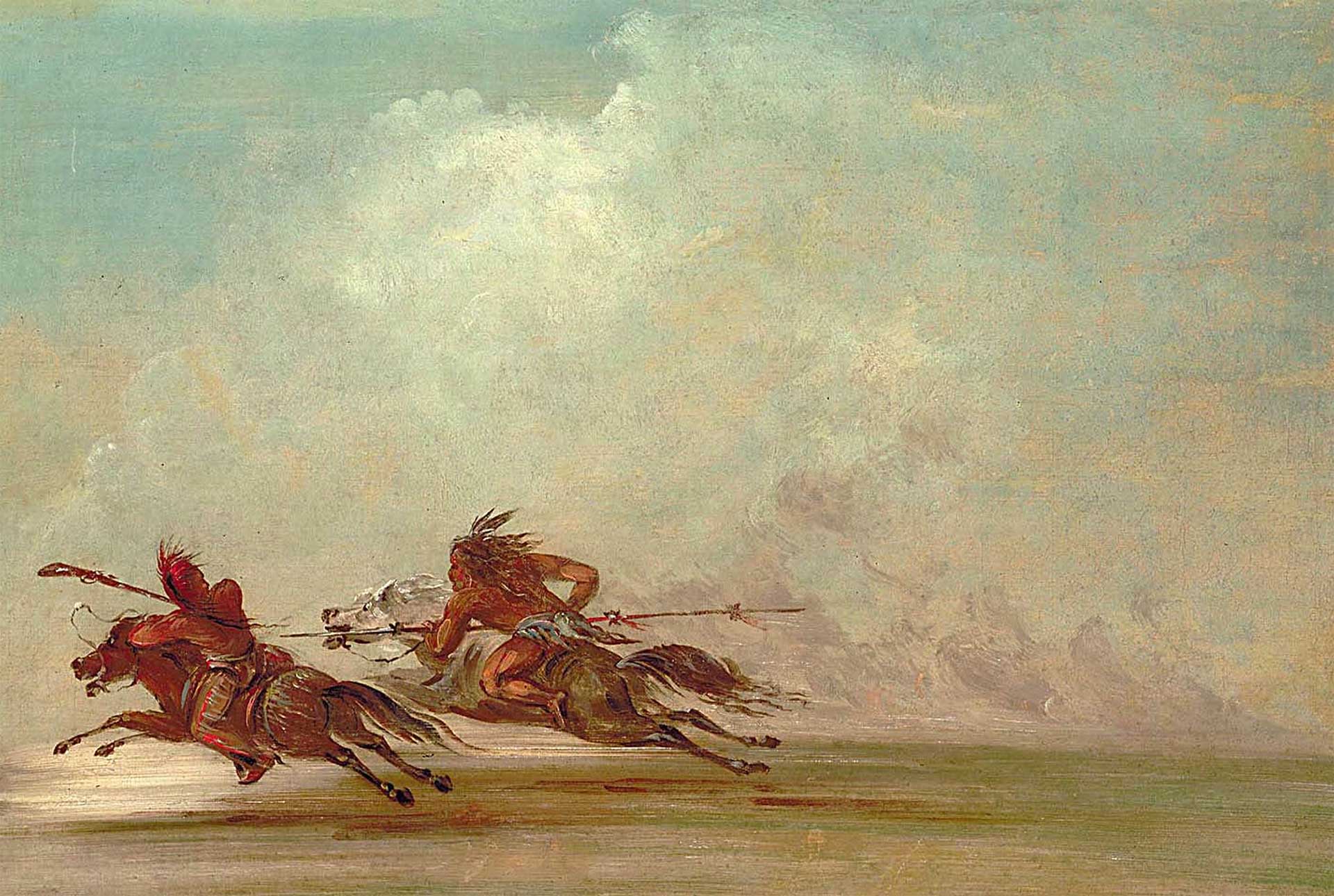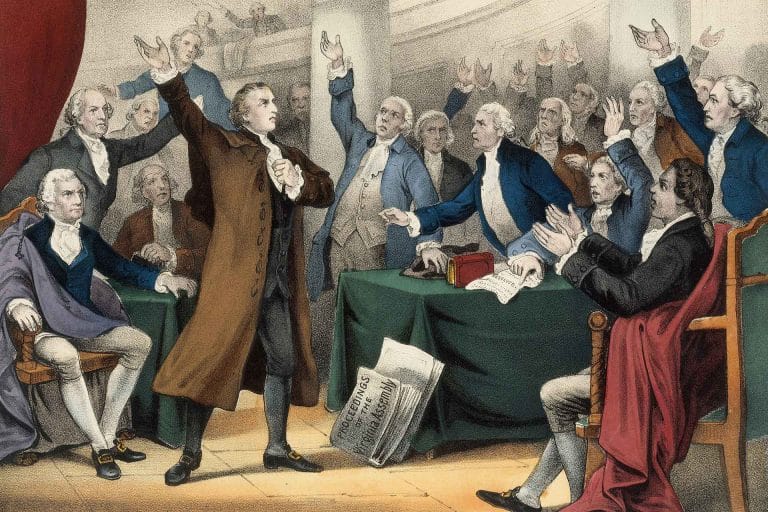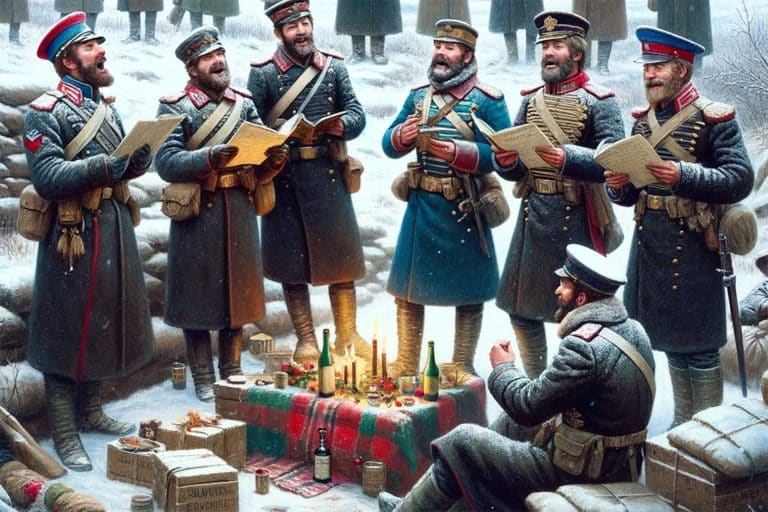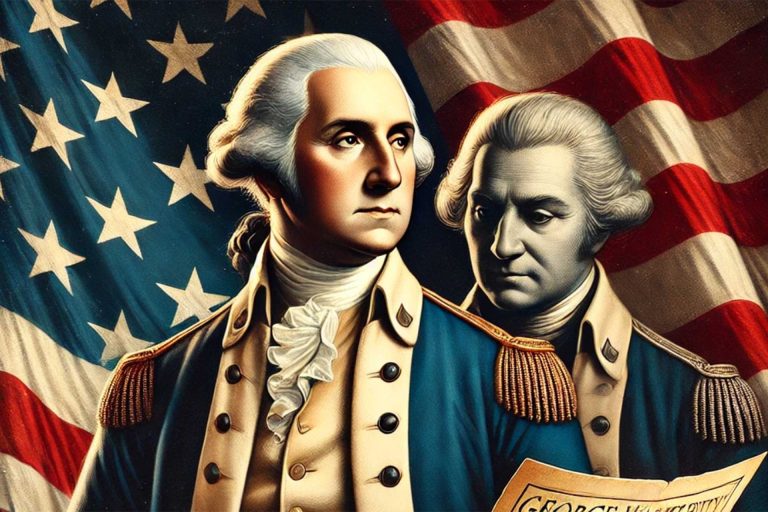Behind the Legend: The True Story of the Comanche
In the vast expanse of the Great Plains, a region that stretches across multiple U.S. states, the Comanche Nation emerged as the most formidable Native American tribe of the 18th and 19th centuries. Known as the ‘Lords of the Plains,’ the Comanches were a group of highly skilled horsemen and fierce warriors who dominated a vast territory, extending from modern-day Colorado and Kansas to New Mexico and Texas.
Their mastery of horseback riding and warfare not only enabled them to defend their lands against rival tribes and European settlers but also to establish a powerful Comanche Empire that controlled trade and dictated terms to surrounding communities. This article aims to delve deep into the history, culture, and warfare tactics of the tribes revered and feared warriors, revealing the true story behind their legendary status as the fiercest tribe of the Great Plains.
The Formation of New Native Nation
The Comanche Nation, distinct for its unique language, culture, and unmatched skills in horseback riding and warfare, was once a part of the Shoshone Tribe. However, in the late 17th century, the Comanches broke away from the Shoshones and migrated southward from the Rocky Mountains to the Southern Plains, which encompasses modern-day Texas, Oklahoma, Kansas, Colorado, and New Mexico. This migration was fueled by their acquisition of horses from Spanish settlers, which allowed them to hunt buffalo more efficiently and effectively.
The horse transformed them into one of the most feared tribes on the plains. Their ability to ride horses with exceptional skill, even from a very young age, allowed them to dominate a vast stretch of territory and played a crucial role in their development as a distinct group.
At their zenith, the Comanches held a territory known as Comancheria, which was roughly the size of France. This vast region was not governed as a cohesive political entity, but rather was organized into numerous autonomous bands, each with its own leader. These bands often collaborated for hunting and warfare, but they also sometimes competed against each other. Interesting early facts about the Comanches include their adaptability to different environments, their trade networks that stretched from Mexico to the Great Plains, and their ability to wage war and negotiate peace with European colonizers and neighboring tribes alike.
Despite their significant influence and territorial dominance, the Comanches maintained a semi-nomadic lifestyle, moving their camps seasonally to follow the buffalo herds. This mobile way of life, combined with their mastery of mounted warfare, enabled them to resist European encroachment for many years, ultimately establishing them as one of the most formidable Native American tribes in North American history.
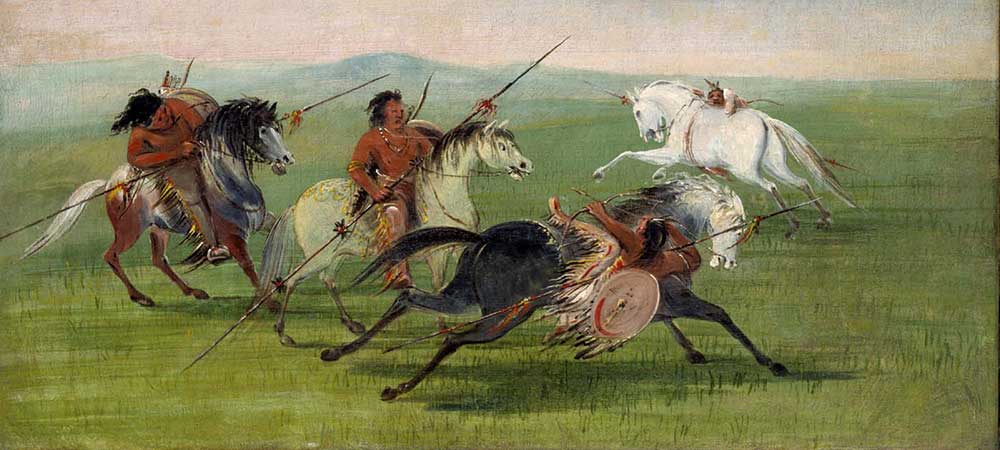
Feared & Respected Warriors
The Comanche warriors were widely feared and respected for their exceptional horseback riding skills, which were honed from a very young age. Children as young as six were taught to ride horses, and by their teenage years, they could handle a horse with remarkable proficiency. This mastery of horseback riding allowed the Comanches to cover vast distances quickly, giving them a strategic advantage in raids and battles.
Their ability to shoot arrows accurately while riding at full gallop made them formidable opponents. It is said that a warrior could fire as many as twenty arrows in the time it took a soldier to reload and fire a single musket. Their skill on horseback also enabled them to hunt buffalo more efficiently, which was crucial for their survival in the harsh environment of the Great Plains.
Their warrior customs were fierce and often brutal. It was common practice to kill men, women, and children during raids on enemy camps, although they sometimes adopted young children of a certain age, who would then be fully integrated into the Comanche way of life. This practice was partly pragmatic, as it helped to bolster their numbers, but it was also a way of demonstrating their dominance over their enemies. Tales of the tribe’s brutality were widely circulated among European settlers and other Native American tribes.
Despite their reputation for brutality, the Comanches were also known for their ability to survive and thrive in the harsh, barren landscape of the Southern Plains. Their nomadic lifestyle, which involved moving their camps seasonally to follow the buffalo herds, allowed them to live off the land more effectively. The buffalo provided them with nearly everything they needed for survival, including food, hides for shelter and clothing, and bones for tools and weapons. The Comanches also traded buffalo hides and other goods with neighboring tribes and European settlers for items they could not produce themselves, such as metal tools and weapons.
The Comanches’ ability to live off the barren land of the Southern Plains, combined with their mastery of horseback riding and mounted warfare, made them one of the most feared and respected tribes in North America. Their dominance over a vast territory, and their ability to resist European encroachment for many years, earned them a place in history as one of the most powerful Native American tribes of the Great Plains.
Aspects of the Rich Comanche Culture
The Comanche culture is rich and distinctive, marked by unique traditions, art, and rituals that set them apart from other Native American tribes. Their language, for example, is part of the Numic branch of the Uto-Aztecan language family, but it has evolved over time into a distinct dialect that is unique to the Comanche. Despite being closely related to the Shoshone language, the Comanche language has several phonetic differences that make it difficult for speakers of other Uto-Aztecan languages to understand.
In terms of dress, they were known for their elaborate clothing, which was often decorated with intricate beadwork and fringe. Men typically wore breechcloths and leather leggings, while women wore long, fringed dresses made of deerskin or buffalo hide. Both men and women wore moccasins on their feet and buffalo robes or blankets over their shoulders for warmth. They also wore their hair long, and both men and women would often braid their hair and adorn it with beads, feathers, and other ornaments.
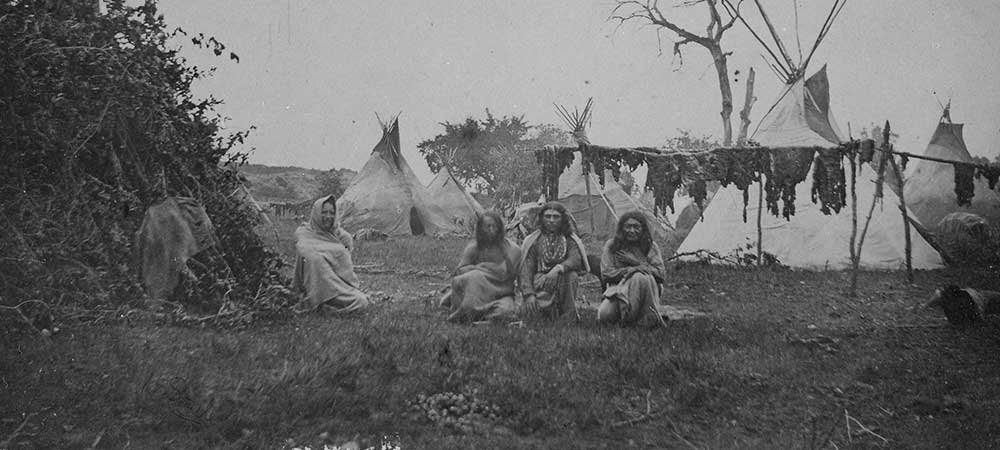
Rituals played an important role in Comanche culture and were often centered around important life events such as births, marriages, and deaths. They believed in a supreme being known as the Great Spirit, and they performed various ceremonies and dances to seek his favor and guidance. One of the most important ceremonies was the Sun Dance, which was performed annually to give thanks for the blessings of the past year and to pray for success in the coming year.
Art was another important aspect of their culture. They were known for their intricate beadwork, which they used to decorate clothing, accessories, and household items. Comanches were also skilled potters and basket weavers, and they made beautiful, functional items that were often decorated with intricate patterns and designs. Additionally, the Comanches were known for their skill in making weapons and tools from bone, stone, and wood.
Overall, the Comanche culture is rich and distinctive, marked by unique traditions, art, and rituals that set them apart from other Native American tribes. Despite their reputation as fierce warriors, they also had a deep appreciation for beauty and craftsmanship, as evidenced by their intricate beadwork, pottery, and basketry. Their culture, like that of many other Native American tribes, is a testament to their ability to adapt and thrive in a challenging environment.
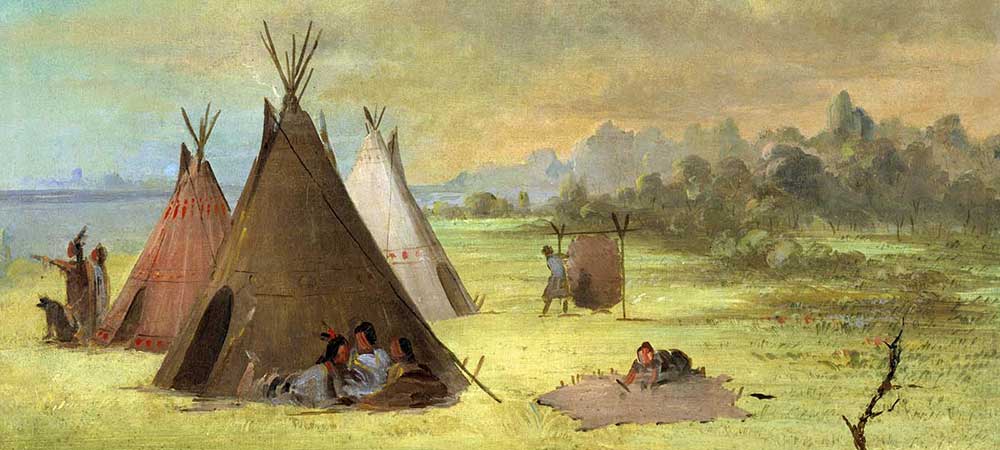
The Comanche’s Place Among the Tribes of the Great Plains
The Comanche were known as the ‘Lords of the Plains’ for a good reason; they were a dominant force in the Southern Plains and interacted with many other Native American tribes in the region, not always peacefully. Their territory, which spanned across modern-day Texas, Oklahoma, New Mexico, Colorado, and Kansas, was vast and rich in resources, and the Comanches were determined to protect it from encroachment by other tribes and European settlers. This often led to conflicts with neighboring tribes, such as the Apache, with whom the Comanche had a long-standing rivalry. They were often at war with the Apache, driving them out of the Southern Plains and into the Southwest.
However, they did have good relationships with certain tribes. They were allied with the Kiowa, a tribe with whom they shared similar customs and a mutual respect for each other’s territory. The Comanche-Kiowa alliance was one of the strongest and most enduring alliances on the Plains, and together, they were a formidable force against their enemies. The Comanches also maintained friendly relations with the Wichita and the Shoshone, from whom they had originally split off in the late 17th or early 18th century.
On the other hand, their traditional enemies besides the Apache, were tribes such as the Osage and the Pawnee. These tribes often clashed over territory, resources, and trading routes. The Comanches were also involved in conflicts with the Spanish and later the Mexicans and Texans, as they sought to defend their territory from foreign encroachment.
Maintaining control over such a vast territory required a combination of strategic alliances, military prowess, and a nomadic lifestyle. The tribe was highly mobile, thanks to their exceptional horse-riding skills, and this allowed them to cover vast distances in a short amount of time. This mobility also allowed them to effectively manage their territory, as they could quickly respond to any threats or challenges that arose.
Additionally, the Comanches used a decentralized system of governance, where different bands of Comanches operated independently of each other but came together in times of need. This allowed for a certain degree of flexibility and adaptability, as each band could make decisions that were best suited for its specific circumstances, while still being part of the larger Comanche nation.
Relationships with Colonial Powers
The Comanche’s interactions with colonial powers were complex and multifaceted, marked by shifting alliances, trade relationships, and conflicts. The Spanish were the first Europeans to come into contact with the Comanches in the late 17th century. Initially, the relationship was marked by hostility and conflict as the Spanish sought to assert their control over the region and convert the indigenous population to Christianity. The Comanches, however, fiercely resisted Spanish encroachment, leading to a series of conflicts that lasted for many years.
In the 18th century, the Comanches began to trade with the French, who had established a presence in Louisiana. The French were more interested in trading than in conquest, and they supplied the Comanches with guns and other goods in exchange for horses and buffalo hides. This trade relationship helped the Comanches to become one of the most powerful tribes on the Plains. They also traded with the British, who were rivals of the Spanish and the French, and this helped them to play the different colonial powers off against each other.
In the late 18th and early 19th centuries, the Spanish and the Comanches reached a sort of détente, as both sides recognized the benefits of trade and sought to limit the violence. However, this fragile peace was often disrupted by conflicts and raids. One notable conflict was the Battle of Spanish Fort in 1759, where a combined force of Spanish troops and allied Native Americans clashed with the Comanches and their allies near the Red River. The battle ended in a decisive victory for the Comanches, who inflicted heavy casualties on the Spanish and captured many prisoners.
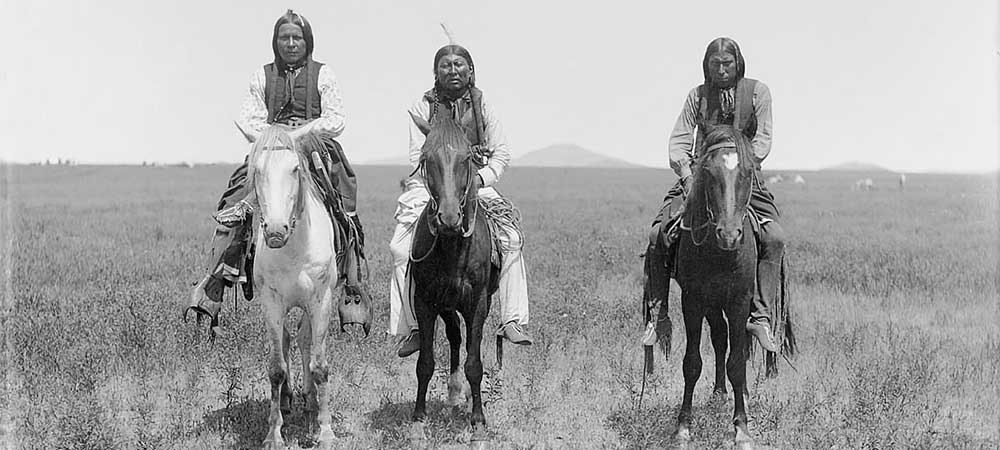
The relationship with the United States was initially friendly, as the U.S. government sought to establish peaceful relations with the Native American tribes in the region. However, as American settlers moved westward and encroached on Comanche territory, conflicts arose.
The Republic of Texas & overlapping Comancheria
In the early 1800s, the Comanche people were already a formidable force in the southern Plains, known for their equestrian skills and warrior culture. Their territory, Comancheria, overlapped with the newly created Republic of Texas, and this led to a series of conflicts between the two. The Republic of Texas, established in 1836 after gaining independence from Mexico, was a fledgling nation, and its president, Sam Houston, was keen to secure peace with the Comanches. Houston, a seasoned diplomat with a genuine respect for Native Americans, almost succeeded in reaching a peace treaty with the Comanche in the 1844 Treaty of Tehuacana Creek.
However, his efforts were thwarted in 1845 when the Texas legislature refused to create an official boundary between Texas and the Comancheria. This refusal undermined the treaty and set the stage for further conflict.
One of the most well-known aspects of their interaction with the United States was the Texas raids. These raids were part of a larger campaign by the Comanches to defend their territory against encroachment by American settlers. They would raid settlements, steal horses and cattle, and sometimes take captives. These raids were often brutal, and they instilled fear in the settlers. In response, the Texas Rangers, a paramilitary force created to defend the Texas frontier, would conduct retaliatory raids into Comancheria. This created a cycle of violence that lasted for many years.
The animosity between the Texas Rangers and the Comanches was particularly intense. The Rangers were equipped with Colt revolvers, a new type of repeating firearm, which gave them a significant advantage in combat. In one notable encounter, the Battle of Walker’s Creek in 1844, a small group of Rangers led by Captain John Coffee Hays defeated a larger force of Comanches, thanks in part to their use of Colt revolvers. This battle marked a turning point in the conflict, as it demonstrated the effectiveness of the new weapon and boosted the morale of the Rangers.
Despite the hostilities, there were also efforts to establish peace. In 1847, the Treaty of Medicine Lodge Creek was signed between the United States and several Plains Indian tribes, including the Comanches. The treaty established a reservation for the tribes in Indian Territory (present-day Oklahoma) and provided for annuities and supplies to be provided by the U.S. government. However, when the Texas Legislature refused to create a recognized border, these efforts were thwarted- for the most part the treaty was not fully honored by either side, and conflicts continued.
In the 1850s and 1860s, the conflicts between the Comanches and the United States escalated. The feared tribe continued to raid settlements in Texas and Mexico, and the U.S. Army conducted several military expeditions into Comancheria.
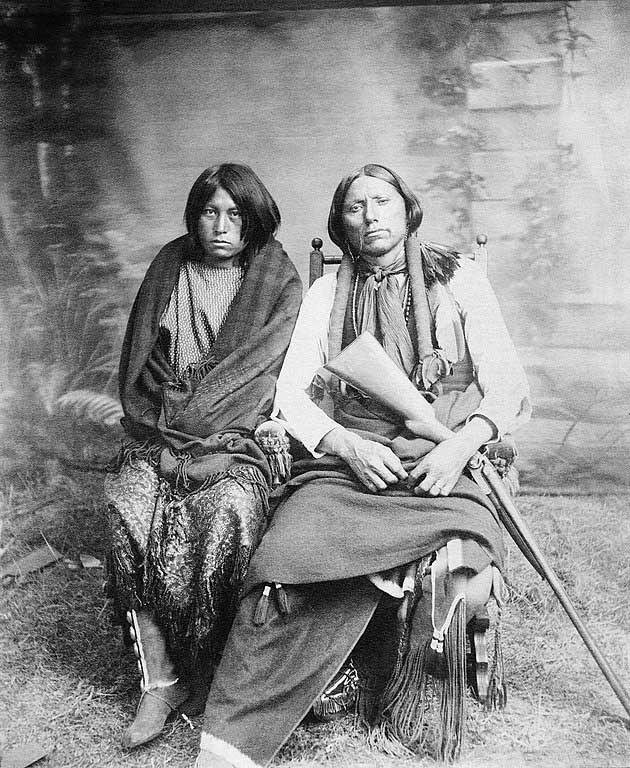
The Comanches were involved in several battles with the U.S. Army, such as the Battle of Adobe Walls in 1864. This battle took place in the Texas Panhandle and involved around 700 Comanche, Kiowa, and Apache warriors attacking a trading post defended by 28 buffalo hunters. The attack was repelled, and the Native American forces withdrew with heavy casualties.
Another notable campaign was the 1868-69 winter campaign led by General Philip Sheridan, which targeted the Comanches and Kiowa in the Texas Panhandle. This campaign culminated in the Battle of Summit Springs in July 1869, in which a force of U.S. cavalry and Pawnee scouts defeated a Comanche and Kiowa village. The battle resulted in the death of the leader, Quanah Parker’s father, Peta Nocona, and the capture of his wife, Cynthia Ann Parker, and daughter, Prairie Flower.
The Red River Wars and the Treaty of Medicine Lodge
The United States began efforts in the late 1860s to move the Plains Indian tribes onto reservations, culminating in the Treaty of Medicine Lodge in 1867.
In exchange for a substantial piece of territory, exceeding 60,000 square miles (160,000 km2), the agreement stipulated the provision of churches, educational institutions, and financial allowances. The U.S. administration committed to halting the buffalo hunters responsible for the drastic reduction in the numbers of the Plains’ buffalo herds, on the condition that the Comanche, as well as the Apache, Kiowa, Cheyenne, and Arapaho tribes, relocate to a reservation area confined to under 5,000 square miles (13,000 km2).
The Red River War was a series of conflicts between the U.S. Army and the Comanches, Kiowas, and Southern Cheyenne that lasted from 1874 to 1875. The war was sparked by the failure of the U.S. government to uphold its promise to stop buffalo hunters from decimating the buffalo herds, a crucial resource for the Plains tribes. The tribes saw this as a betrayal and launched a series of attacks on buffalo hunters and settlers in the region. In response, the U.S. Army launched a campaign to subdue the tribes and force them onto reservations.
One of the major battles of the Red River War was the Second Battle of Adobe Walls, fought on June 27, 1874. A group of 28 buffalo hunters, led by Bat Masterson and Billy Dixon, was besieged by a force of approximately 700 Comanches, Kiowas, and Cheyennes, led by the Comanche chief Quanah Parker and the Kiowa chief Satank. Despite being heavily outnumbered, the buffalo hunters were able to hold off the attackers with their superior firepower. The battle ended in a stalemate, with the Native American forces withdrawing after suffering heavy casualties.
Another key battle of the Red River War was the Battle of Palo Duro Canyon, fought on September 28, 1874. A force of U.S. cavalry, led by Colonel Ranald S. Mackenzie, attacked a Comanche, Kiowa, and Cheyenne village in the Texas Panhandle. The battle resulted in the destruction of the village and the capture of over a thousand horses, which were subsequently slaughtered by the U.S. troops. This defeat, coupled with the harsh winter that followed, forced the Comanches and their allies to surrender and accept relocation to reservations.
Throughout this period, European diseases such as smallpox and measles, which they had no immunity to. These diseases decimated their population, further weakening the ability of the Great Plains tribes to resist the U.S. military.

The Red River War marked the end of the Comanche way of life as free-roaming hunters of the Plains. Within just ten years, the buffalo were on the verge of extinction, effectively ending the Comanche way of life as hunters. In May 1875, the last free band of the tribe, led by the Quahada warrior Quanah Parker, surrendered and moved to the Fort Sill reservation in Oklahoma. The last independent Kiowa and Kiowa Apache had also surrendered.
The Treaty of Medicine Lodge and the Red River War marked the end of an era for the Comanche people. Despite their fierce resistance, they were ultimately forced to surrender their way of life and move onto reservations. The failure of the U.S. government to uphold its promises, coupled with the devastating impact of European diseases and the decimation of the buffalo herds, led to the defeat of the Comanches and their allies in the Red River War.
Comanche Legacy Today
Today, the Comanche Nation has its headquarters in Lawton, Oklahoma. Their tribal jurisdictional area is located in Caddo, Comanche, Cotton, Grady, Jefferson, Kiowa, Stephens, and Tillman Counties. Membership of the tribe requires a 1/8 blood quantum (equivalent to one great-grandparent). Despite their historical might and the vast territory they once controlled, the Comanche Nation has approximately 17,000 enrolled tribal members, of whom about 7,000 reside in tribal jurisdictional areas.
In the modern era, the Comanche Nation has developed a diversified economic base to support its members and the surrounding communities. The tribe owns several businesses in industries including gaming, construction, and agriculture. The Comanche Nation operates casinos, a smoke shop, a trucking company, and more. Additionally, the tribe plays a vital role in local economies by providing jobs and contributing to community development projects. The Comanche are dedicated to preserving their rich culture and history while actively participating in contemporary society and economy.

